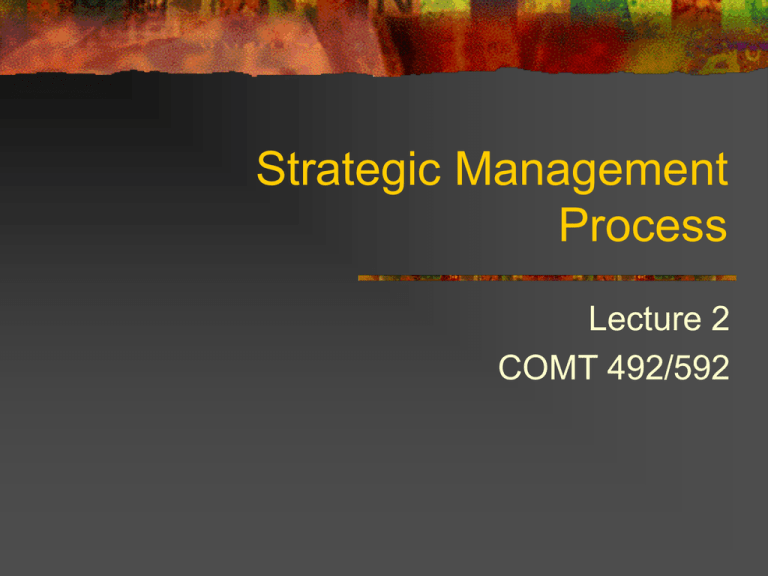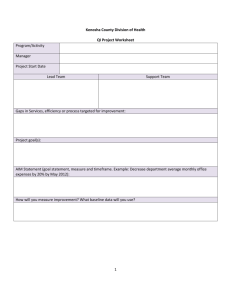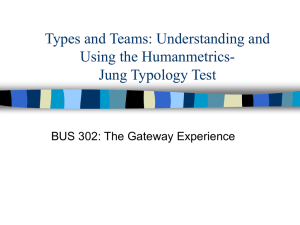Strategic Management Process Lecture 2 COMT 492/592
advertisement

Strategic Management Process Lecture 2 COMT 492/592 Overview Planning Formative Research Message Design Pre-testing Implementation Evaluation & Feedback Step 1. Listening Background analysis Look at environment Lit review Review of epidemiological data Interviews w/ key informants & target customers Access, availability of resources that affect goal Community support Networking Analyze your resources Staff Budget Step 2. Planning Defining campaign objective Choose specific goals Define core marketing strategy Step 2 (cont’d). Planning Once goal has been chosen, or problem area to address, now you are ready to conduct in-depth audience research Qualitative Focus groups w/ audience segments Ascertain audience barriers to goal behavior Find out tastes, media uses, wants, etc. What are differences among segments? What are perceived costs & benefits of target behavior? Planning (cont’d) Quantitative research Baseline survey enables you to assess baseline indicators of target behavior and attitudes (preferably broken down by stage of behavior change) Later can be used to evaluate campaign’s impact Step 3. Structuring Analysis Analyze the problem: reconfigure the identified problem as a behavioral or psychosocial goal Analyze media uses Analyze your own resources Strategic plan Clarify goals and objectives Choose mix of media Plan distribution Map out workplan public relations; media partners Internal business plan Plan monitoring & evaluation Step 3 (cont’d). Structuring: Message and materials development Identify appropriate channels Develop effective messages Format Media outlets Messengers Theories of behavior change Translate audience research into message concepts Production Draft materials using creative energies Step 4. Pre-testing Recruit sample of target audience Focus group Show draft materials Record responses Revise materials to accommodate audience feedback Step 5. Implementation Produce messages Distribute Community partners Obtain paid or free media Generate publicity Monitor success Message production & distribution Audience response Community response Cycle feedback into production & plan Step 6. Monitoring: Evaluation & feedback Choose evaluation indicators Choose methods Data from existing sources Pre-test/post-test comparisons Tracking data (e.g., hotline or client records) Use control groups (field experiment) Analyze & write up results




